Maharajas & Mughal Magnificence — A collection of extraordinary treasures
Rahul Kadakia, Christie’s International Head of Jewellery, introduces some of the many storied pieces from an incredible collection of royal jewels and jewelled objects that’s set to make auction history in New York this June
‘This is living history in your hand,’ says Rahul Kadakia, International Head of Jewellery at Christie’s, of a stunning trove of jewels that date back nearly 500 years to the early part of the Mughal dynasty, which ruled in India from 1526 to 1857.
These objects are offered from The Al Thani Collection. From next year, works of art from this encyclopaedic collection will be shown at a new museum space in Paris. In addition to new acquisitions, sale proceeds will support ongoing initiatives of The Al Thani Collection Foundation which extend from exhibitions, publications and lectures to sponsorships of projects at museums around the world.
Eyewitness accounts demonstrate how highly Mughal rulers valued gems for their rarity, physical properties and provenance
India’s rich culture of jewellery is partly the result of natural circumstance. The mines of Golconda yielded the highest grade of diamonds; Kashmir produced the rarest and most beautiful sapphires; while the greatest emeralds arrived in India from Colombia through commercial exchange via the Portuguese-controlled ports of Goa.
Jewellery in the Mughal tradition was an integral aspect of articulating authority, with eyewitness accounts from the height of the Mughal Empire revealing the extent to which rulers valued gems for their rarity, physical properties and provenance.
Imperial fashions in jewellery and jewelled objects were subject to local, regional and external influence, evident in the introduction of enamelling, which most likely arrived at the imperial court via Renaissance jewels presented as gifts by Western ambassadors. The influence of the West can also be seen in the gem-cutting and metalworking technology introduced by European jewellers, who were welcomed at court and in some cases went on to play a role in imperial workshops, and in the design of jewels from the second half of the 19th century, in particular.
Indian royal treasures
Among the many Indian royal treasures in the collection is a white gold, diamond-encrusted jigha (turban ornament) that would probably have been worn on formal occasions by a Maharaja from an important state.
Belle Époque diamond jigha, 1907 and remodelled circa 1935. The turban ornament set with old baguette and pear-shaped diamonds, white gold, fitted with plume holder on the reverse, lower portion detachable and may be worn as a brooch
The finest gems in an Indian treasury would have been mounted into impressive jewellery for a ruler to wear. The necklace (kanthu) shown below is defined by seven foiled emeralds in closed gold settings, separated by diamond clusters.
An emerald, diamond and seed pearl necklace, Colombian emeralds, mid- to late-19th century
Created during the mid to late 19th century, the necklace exemplifies the social dynamics among Indian princes in this period, in which the ownership of magnificent jewels assumed great importance.
Jewelled objects
In the film we see a gold pen case and inkwell (1575-1600), jewelled with diamonds, rubies and emeralds. The symbolic importance of ceremonial inkwells was well known in the medieval Islamic world, where they were the insignia of both imperial rank and governmental office.
It carried even greater resonance in a Muslim context because of the importance of the written word of the Qur’an. Pen cases were prized possessions of sultans and their chief ministers — the royal pen box implied learning and reinforced authority.
During the Mughal dynasty, jewelled pen case and inkwell sets were presented by emperors as a sign of the highest distinction.
An emerald, ruby and diamond-set gold state pen case and inkwell (Davat-I Dawlat), with a sacred bird (hamsa) engraved under the inkwell. Deccan, central India, late 16th century
Among the collection’s countless highlights is a dagger, from either Tanjore or Mysore, that dates to between 1790 and 1810. The dagger’s gold hilt is crafted in the form of a yali, a mythical lion-headed beast which is well known in the architecture of southern India, and is kundan-set with foiled table-cut diamonds, cabochon rubies and cabochon emeralds.
A gold gem-set hilted dagger (Kinjal). The hilt in the form of a yali, set with diamonds, rubies and emeralds, steel blade. Tanjore or Mysore, South India, 1790-1810
Kundan is a uniquely Indian goldsmithing technique that allowed jewellers to create intricate settings for gems set on metals, hardstones and other materials. Once raised to 100-per-cent purity, gold was hammered into sheets of extreme thinness, then cut into small strips and pressed into place with an iron stylus. The purity of the gold allowed the strips to bond molecularly at room temperature, enabling fine settings to be created on surfaces and using materials that would be damaged by heat.
Diamonds
The collection features a number of outstanding diamonds, including the Mirror of Paradise Diamond (below, left) and the Arcot II Diamond (below right), both of which originate from the Golconda mine, the earliest diamond mine known to man.
The Mirror of Paradise. Rectangular-cut diamond of 52.58 carats, tapered baguette-cut diamonds, D colour, internally flawless
The Arcot II Diamond. Pear brilliant-cut diamond of 17.21 carats
The Arcot Diamond, a brilliant-cut, pear-shaped, D-colour stone weighing 17.21 carats, was one of two such diamond ear drops sent as gifts to Queen Charlotte (1744-1818), the wife of King George III, from the Nawab of Arcot. The diamonds were later acquired at auction by the Marquess of Westminster and subsequently mounted in the Westminster Tiara, which was worn at the coronation of Queen Elizabeth II.
The Nizam of Hyderabad Necklace. Diamond, emerald and enamel necklace. Modified triangular-shaped table-cut diamonds, variously-shaped faceted and rose-cut diamonds, carved emerald bead, green enamel, foil, gold, engraved on the reverse with foliate motif, 16 in, late 19th century
The Nizam of Hyderabad Necklace (mid to late 19th century), shown above, is made of gold with seven large foiled triangular diamonds, each framed in an openwork panel of kundan-set diamond leaves. At front centre is a triangular diamond pendant surrounded by 12 diamond leaves, mounted on an inner edge with a melon-cut emerald bead.
Spectacular parade necklaces became a hallmark of Indian royal attire in the late 19th century, and this Nizam of Hyderabad Necklace is an especially spectacular example of Indian princely jewellery.
Cartier jewels
Of all the great jewellery houses, Cartier had the longest and most productive association with India, and these cross-cultural references are evident in many of the spectacular Cartier creations in the collection. Kadakia describes Jacques Cartier’s passion for India as ‘a culturally significant moment’ in the history of jewellery.
In the early years of the 20th century, Jacques Cartier forged close links with a number of Indian princes in Europe, relationships which Kadakia describes as ‘a great meeting of minds’. The jeweller made frequent visits to India, regularly meeting with the royal families with whom he established close relationships.
An Art Deco emerald, sapphire and diamond belt buckle-brooch, Cartier. Octagonal step-cut emerald of 38.71 carats, buff-top calibré-cut sapphires and emeralds, old and single-cut diamonds, platinum and 18k white gold (French marks), 3½ in, 1922. Unsigned, partial maker’s mark (Atelier Renault), no. 0346, red Cartier case
Many of Cartier’s finest jewels from this period were inspired by Indian architecture, gems and jewels. One such example is a stunning 1922 platinum belt brooch set with diamonds, emeralds and sapphires (shown above). The calibré-cut sapphire trim and diamond detail are reminiscent of ornate archways present in Mughal palaces and royal quarters.
This incredible piece was part of the collection of Sybil Sassoon, Marchioness of Cholmondeley, and daughter of Sir Edward Sassoon and Baroness Aline de Rothschild. She chose to wear it, alongside her most important jewels, for both the coronation of King George VI in 1937 and the coronation of Queen Elizabeth II in 1953.
The Patiala Ruby Choker, an Art Deco ruby, diamond and natural pearl choker necklace, Cartier, 1931. Ruby beads, oval cabochon and circular-cut rubies, old and single-cut diamonds, natural pearls, platinum (French marks), 13 in, 1931. Restored and restrung by Cartier Tradition in 2012. Signed Cartier, ‘Paris, Made in France’, no. HSA40139, red Cartier case
One of the greatest examples of what Kadakia calls ‘the fusion of East and West’ is seen in the Patiala Ruby Choker by Cartier. Made in 1931, the choker incorporates 292 ruby beads weighing 356.56 carats, interspersed with panels of 132 threaded pearls, caught at each side with clasps of 120 diamonds and rubies set in platinum, each clasp formed of a cluster of six cabochon claw-set rubies.This choker is one component of a larger bib-style necklace, commissioned by Maharaja Bhupinder Singh of Patiala, one of Cartier’s greatest clients.
The Taj Mahal Emerald, Cartier. Hexagonal-shaped carved tablet emerald of 141.13 carats, circular-cut diamonds, platinum and 18k white gold (French marks). 2⅛ in, 2012. Signed Cartier, no. TI9645, red Cartier case inscribed ‘Taj Mahal’ emerald
Other highlights from the collection include The Taj Mahal Emerald, an extraordinary large carved stone named for the carved floral engravings that were reminiscent of the coloured stone inlay of the Taj Mahal. The emerald had once formed the centrepiece of one of Cartier’s most iconic creations, the Collier Bérénice, a necklace or shoulder ornament, which was exhibited in 1925 at the Exposition des Arts Décoratifs et Industriels Modernes in Paris.
Devant-de-Corsage brooch, 1912, Cartier. Pear brilliant-cut diamond of 34.08 carats, oval brilliant-cut diamond of 23.55 carats, modified marquise brilliant-cut diamond of 6.51 carats, heart modified brilliant-cut diamond of 3.54 carats, lily-of-the-valley old-cut diamond links, platinum and 18k white gold (French marks), 7½ in, 1912. Signed Cartier
The ‘devant-de-corsage’ brooch (above) is an extraordinary example of the magnificence of the Belle Époque, combining top diamonds, a delicate design, the finest maker and famous provenance.
It was made to order in 1912 for Solomon Barnato Joel, who made his fortune in the South African diamond mines. As a director of Barnato Brothers as well as of De Beers Consolidated Diamonds Mines, Joel was a major influence on the diamond and gold industries at the beginning of the 20th century. His fascination with diamonds remained a constant throughout his long career, and for this brooch Joel provided Cartier with his four finest stones.
A single-strand natural pearl and diamond necklace, Cartier. Graduated strand of 37 natural pearls of 14.00 to 7.05 mm, old-cut marquise-shaped diamond, platinum (French marks). Unsigned, partial maker’s mark, red Cartier soft case
Jacques Cartier travelled to India and the Middle East to buy natural pearls. The Cartier natural pearl necklace shown above features pearls with ‘an incredible graduation in size’, says the specialist.
Pocket watches
The collection features a group of pocket watches, which have all been hand-painted with images of the Maharajas who commissioned them. The example below shows Maharaja Bhupinder Singh of Patiala in one of his iconic bejewelled portraits.
An enamel and gold hunting case pocket watch. Champlevé enamel portrait depicting Maharaja Bhupinder Singh of Patiala, enamel coat of arms on the reverse, white enamel dial, 18k gold (British and Swiss hallmarks), 2½ in, case no. 34894, circa 1930
Birds
Birds, especially falcons, were closely associated with kingship at the Mughal court and in successor states. The sport of falconry was a favoured pastime among the royal princes, and is frequently referred to and depicted in paintings of the Mughal era.
A diamond and multi-gem bird pendant with variously shaped table-cut diamonds, oval and triangular-shaped cabochon rubies and emeralds, pearls, black, blue, green, white, red and yellow enamel, foil, gold on a lac core, mid- to late-18th century
A pair of jade falcon bracelets, each set with leaf-shaped rubies. India, early 19th century
Miniature paintings of falcons show them adorned with fine materials, including the anklets needed to restrain them. The pair of jade falcon anklets shown above date from circa 1800 and have gold rims framing a band of five rubies in leaf-shaped kundan settings.
This production of jewelled birds and the development of paraphernalia to adorn falcons reached a high point under imperial rule, and gem-encrusted gold birds were considered significant royal gifts.
An enamelled and gem set model of a parrot, Hyderabad, Deccan, circa 1775-1825. Set with diamonds, rubies and emeralds and with a pendant emerald hanging from its beak, on a stand similarly decorated, base decorated with two central flowers in green and white enamel and four leaves in each corner, 8¼ in (22.2 cm) high
This gold parrot from Hyderabad dates from 1775-1825, and is covered in green champlevé enamelling, with kundan-set diamonds, rubies and emeralds. The eyes are made from carefully crafted banded agates. Birds were one of the few ways in which, in a Muslim court context, the Indian love of sculpture could find expression.
Highlights from the collection will be view in London (24 April – 1 May); Shanghai (25-28 April); Geneva (10-14 May); New York (10-14 May); and Hong Kong (24-27 May). The entire collection will be on view in New York from 14-18 June, ahead of the auction on 19 June.
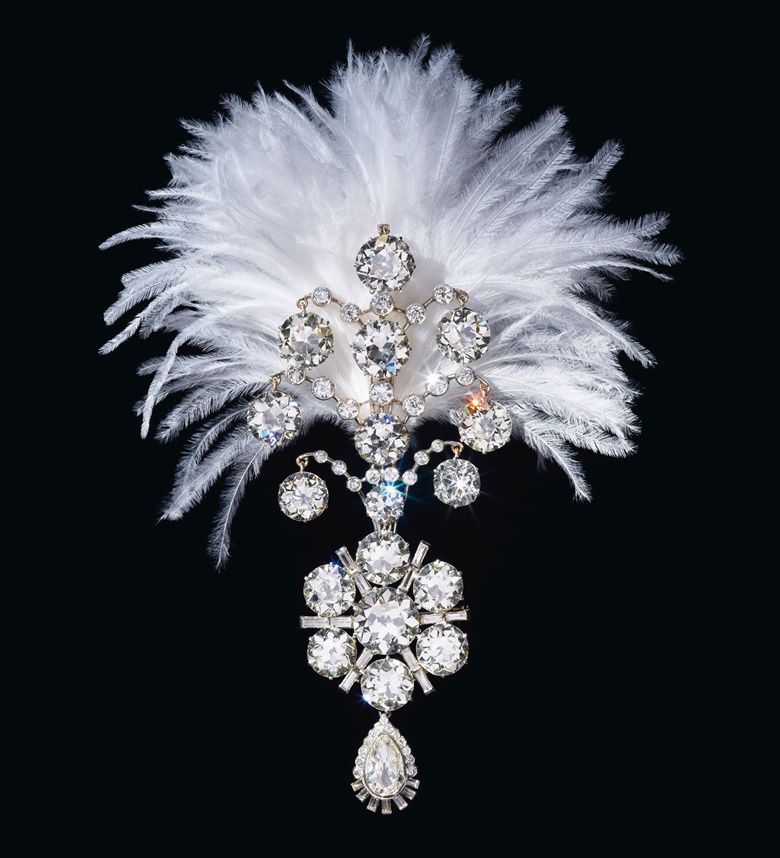
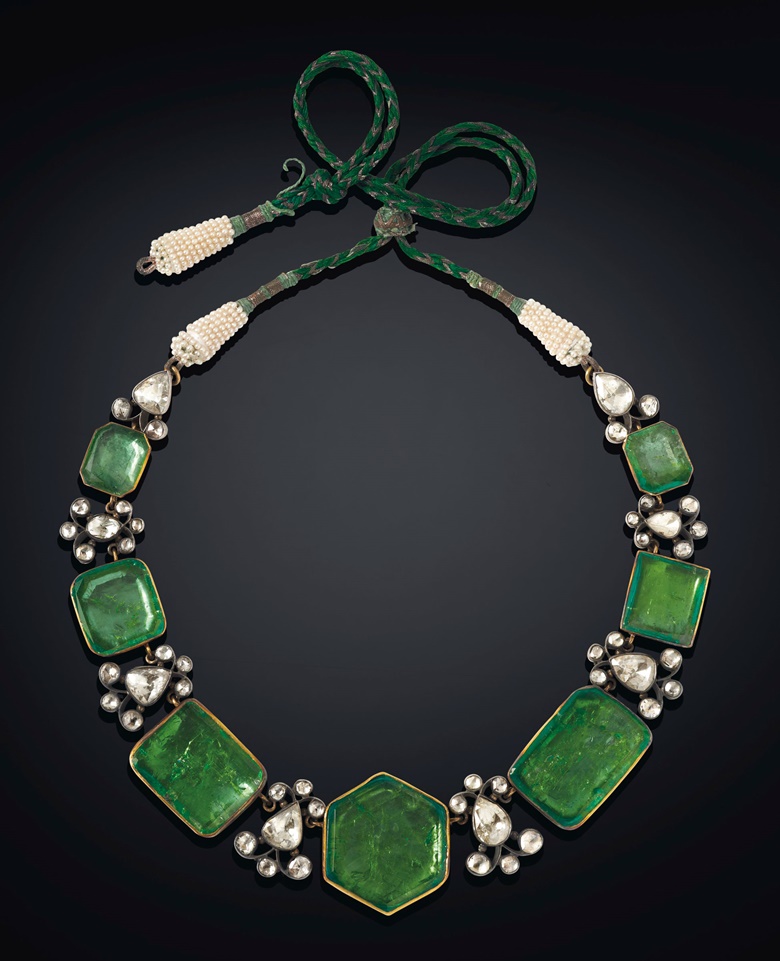
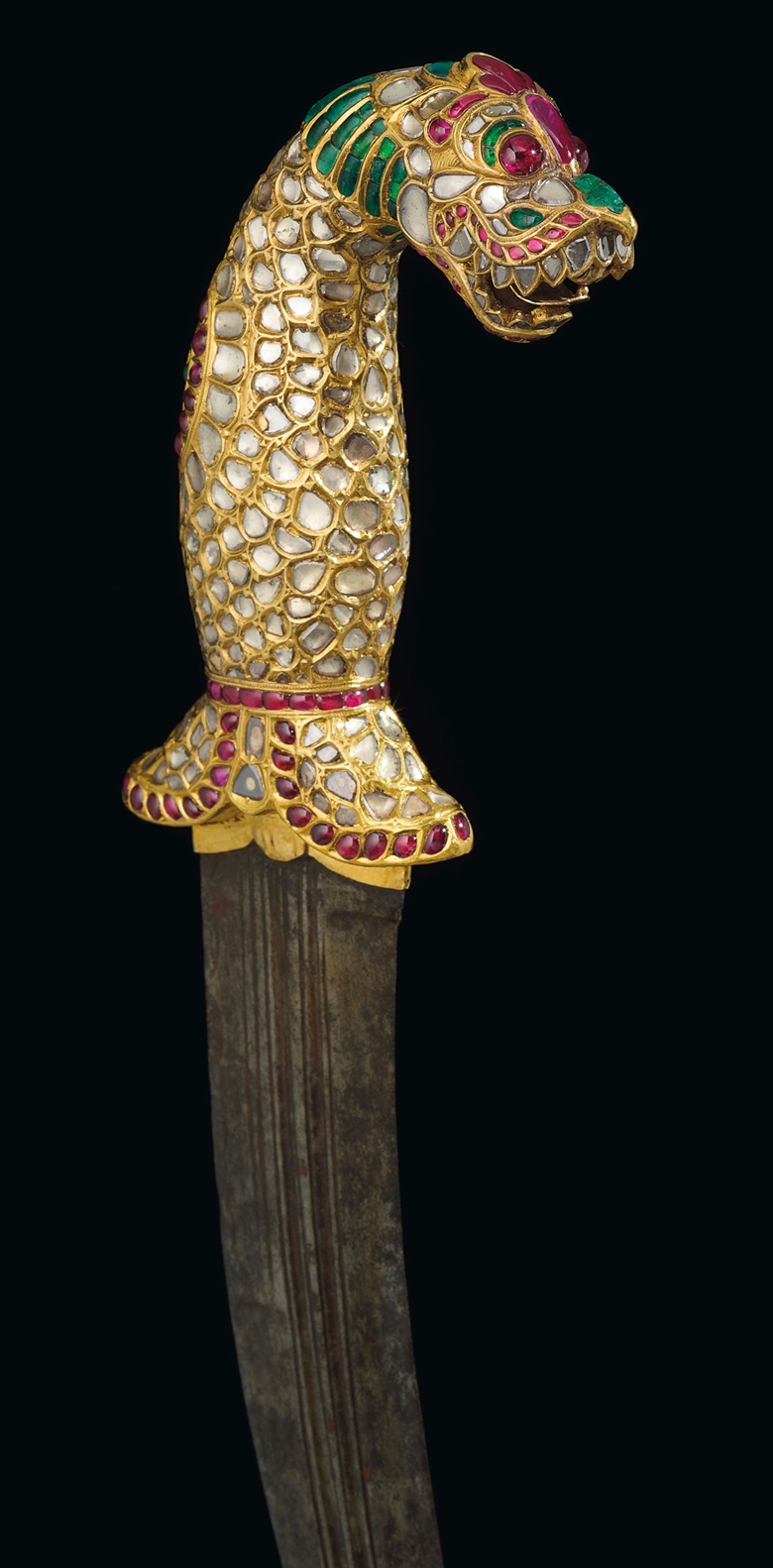
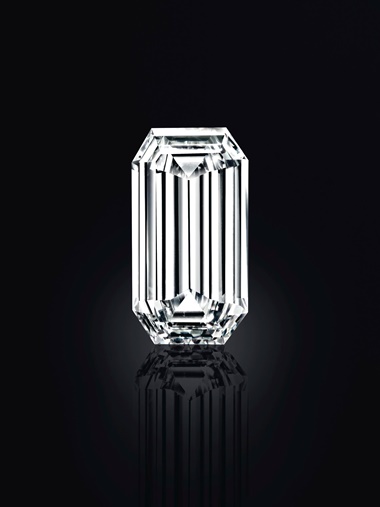
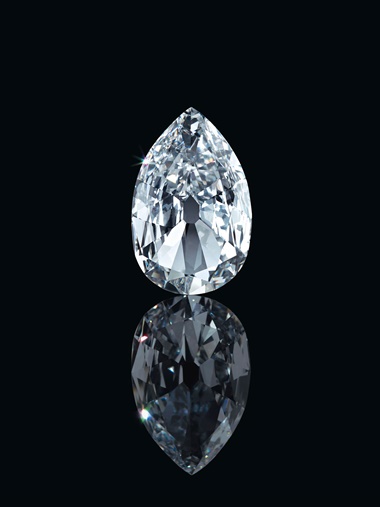
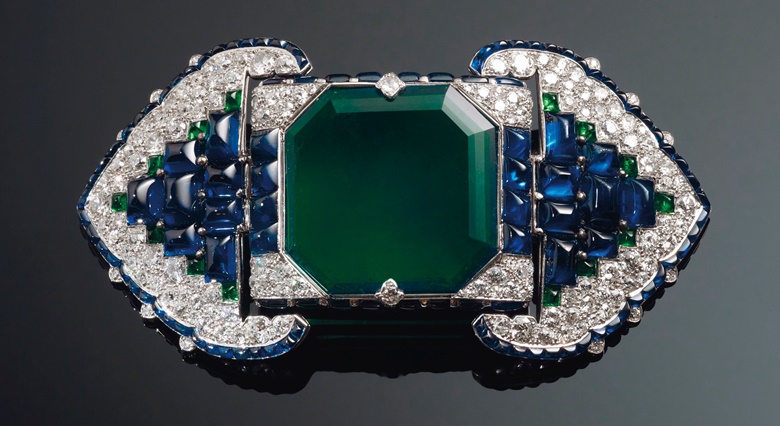
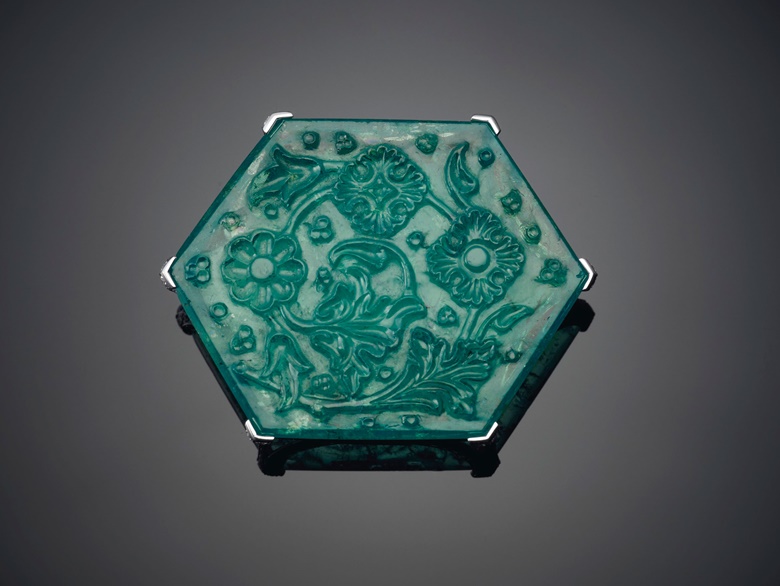
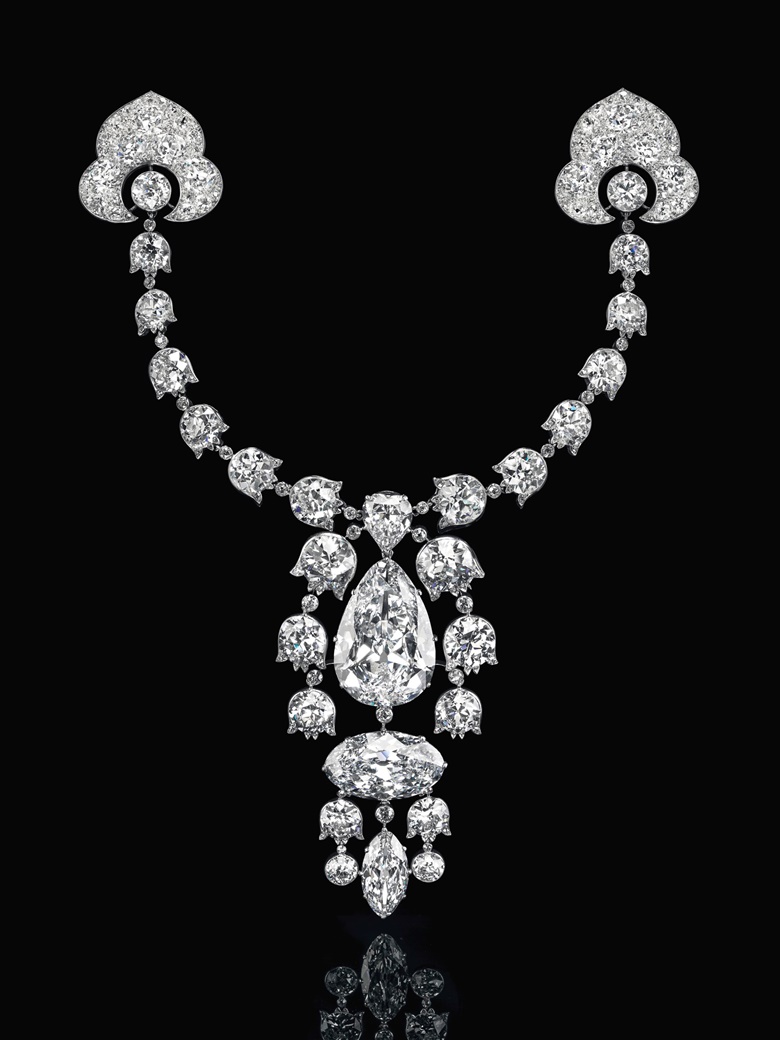
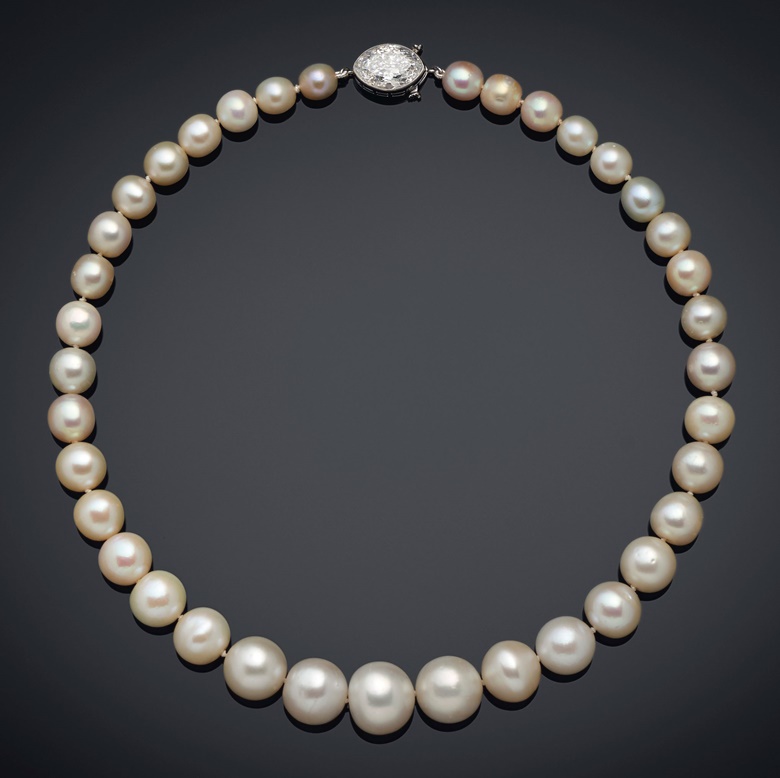
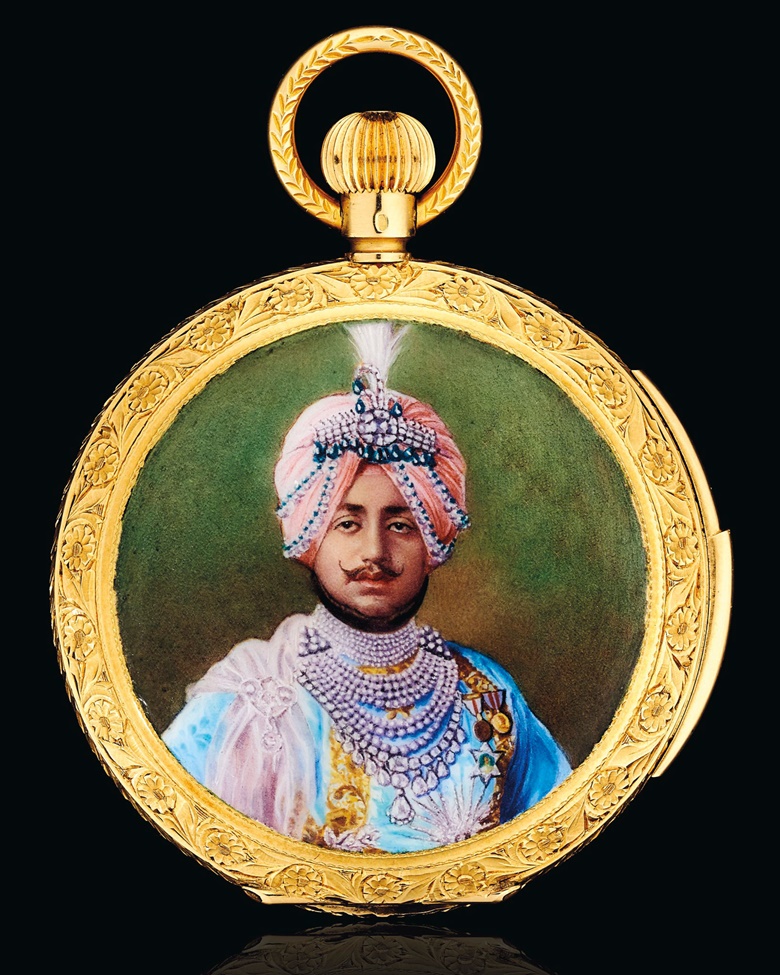
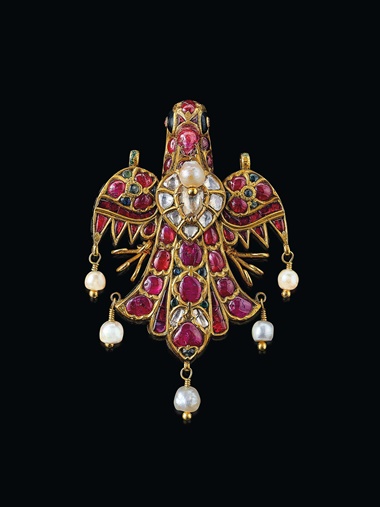
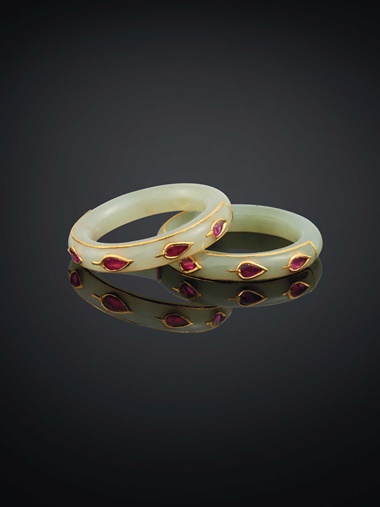

No comments:
Post a Comment